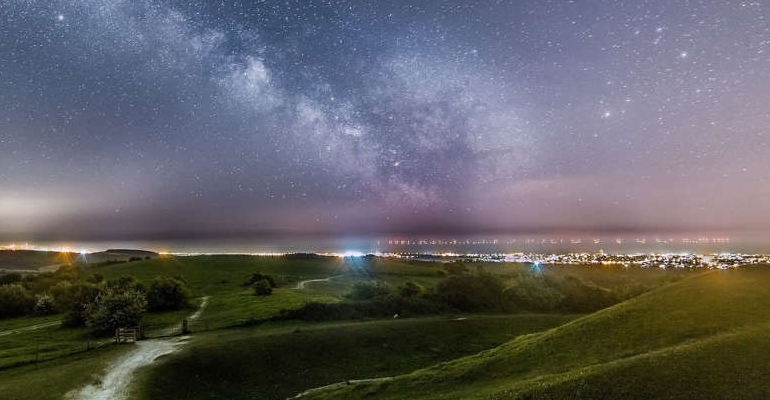
If you can remember ‘twinkle twinkle little star’ from childhood, looking up at the sky at night with a sense of awe and wonder then that sense of being starstruck will always be there, as Robert Veitch discovered when his lucky star led him to an expert
Sandra Voss is Science Director at The Observatory Science Centre, having worked there since 2003. Her physiology PhD is from the Royal Veterinary College. “Years ago, I came here with my husband, we picked up a leaflet for a ‘Beginners Astronomy Course’ and decided to do it together. In 2003, National Astronomy Week promoted a close approach of Mars and I took a part-time job here. One thing led to another, and now I’m Science Director. I eventually did my Astronomy GCSE,” she revealed with a grin.
Sandra’s story proved astronomy can be a viable career change, and she also believes it’s a great career for schoolchildren with a mathematical or scientific inclination. “We have some super well qualified people with astrophysics degrees working here.”
Astronomy is a discipline where amateur contributions help the professionals. “Amateurs can spend vast amounts of time studying the skies and they are a greatly valued asset,” she revealed. It’s akin to an armchair viewer being able to help Lewis Hamilton’s F1 car go that bit faster.
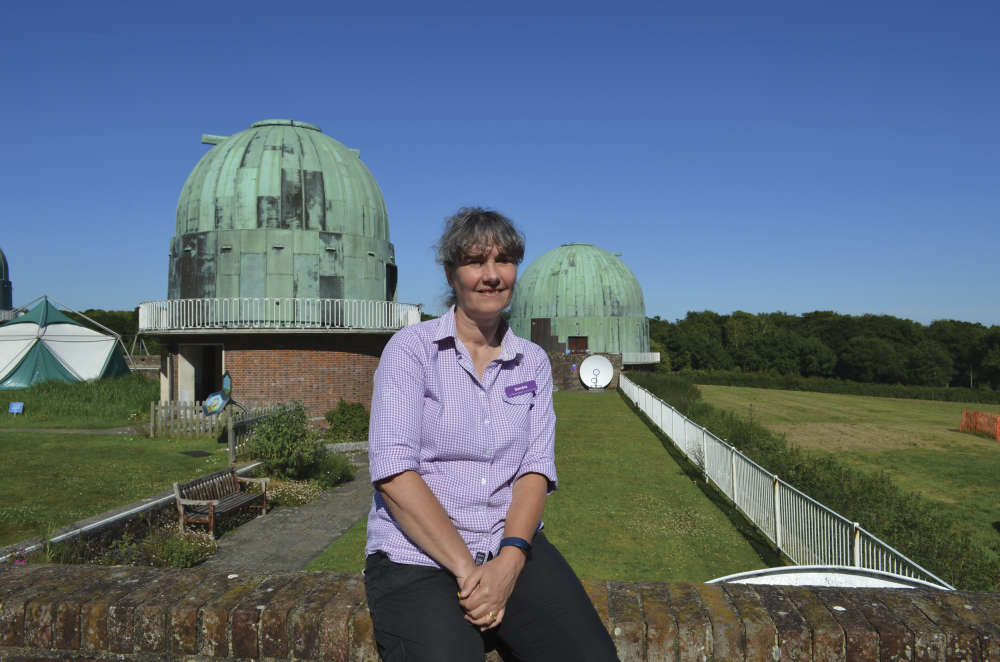
Sandra Voss
The development of astronomy was rooted in practical necessity. It was Charles II who commissioned the construction of the Royal Observatory Greenwich in 1675. Located on the Prime Meridian it divides the world into eastern and western hemispheres, and is the place where Greenwich Mean Time (GMT) originated.
The purpose of the observatory was simple, to map the stars more accurately and help shipping navigate at night and when out of sight of land, ultimately to reduce shipwrecks. When star charts were coupled with accurate maritime timepieces linked to GMT, it was possible for ships to locate themselves exactly. As a result, the number of shipwrecks drastically reduced.
John Harrison, a marine chronometer, developed the first accurate maritime timepieces and it was Harrison’s ‘lesser watch’ that made the Trotter brothers, millionaires in the Only Fools and Horses episode Time on our Hands.
Over time, the study of the stars became a scientific endeavour that is still searching for the answer to how it all began as well as fulfilling humankind’s innate inclination to explore the heavens above us... think one small step in 1969 and return to the moon in 2025.
Sandra picked up the story. “After WWII it was decided to move from Greenwich, due to increasing light pollution and magnetic interference from the electrification of London’s railways.”
Over 70 sites were investigated, before the Royal Greenwich Observatory, Herstmonceux opened in 1957. The six telescopes that were transported from Greenwich became known as the ‘Equatorial Group’ and included the astronomically famous Yapp telescope.
The observatory domes were coated in copper and a chemical coating was applied to speed up the weathering, to help them blend into the countryside. Sandra revealed with a smile. “Rumour has it, the chemical coating was equine urine.”
Trees were planted during construction to screen the observatory from the village, and because trees limited ground level heat haze and kept ground temperature more even. The walls were finished with knapped flint to maintain congruity with their surroundings. A 90-year old stonemason from Lewes had to be coaxed out of retirement to undertake the work.
In 1967 the Queen opened the Isaac Newton Telescope, which was the biggest in Britain at the time. “Low altitude and mist rolling in from the Pevensey Levels made observations difficult,” said Sandra. In 1979 it was moved to a much higher altitude at the Roque de Los Muchachos Observatory on the Canary Island of La Palma.
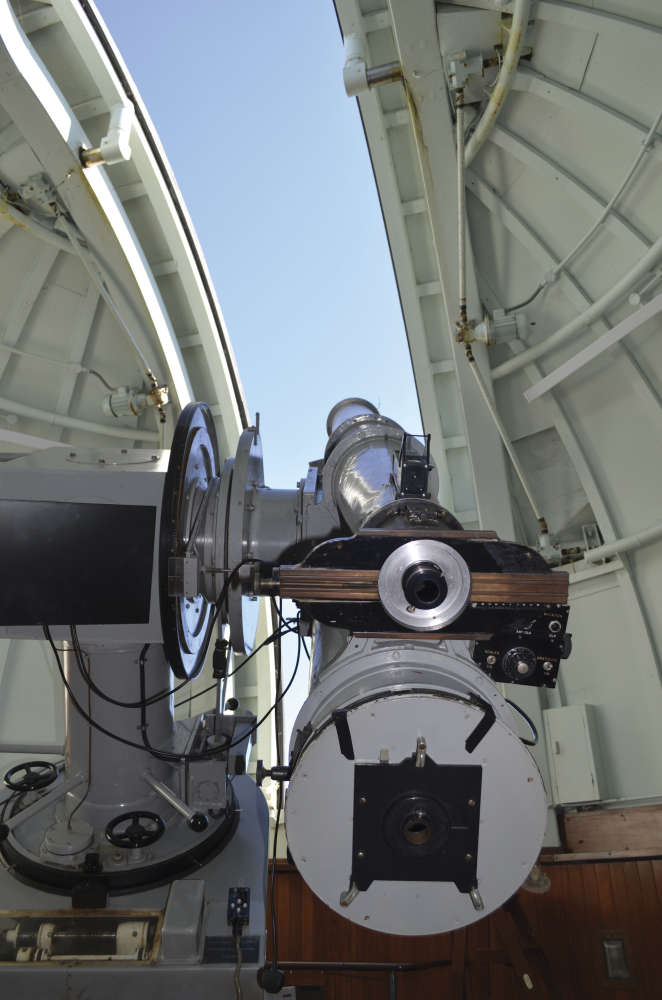
13 inch Astrographic Refractor
Cold nights on the edge of the marsh had to be endured, because heating the domes meant the warm air would rise and blur the photographs. At its peak, over 200 people worked at the Royal Greenwich Observatory, Herstmonceux.
In 1990 the observatory moved from Sussex to Cambridge and five years later The Observatory Science Centre opened, under the stewardship of the charity, Science Projects. It runs as an education centre and as a tourist attraction, assisted with Lottery funding. Sandra’s passion for astronomy is evident from the way she spoke so enthusiastically about it, “I always get a ‘wow’ when I look up on a clear night.”
She was keen to point out that seeing a shooting star is potluck. “A shooting star is generated by heat, caused when a meteor is captured by the earth’s atmosphere – It’s like putting your finger over a bicycle pump – The air pressure generates friction then heat, which generates ablation, which creates the white contrail behind the meteor.” The part of a meteor that survives the impact with earth becomes a meteorite.
Sandra told me the International Space Station is sometimes visible on a clear night. “It can take up to six minutes to move from one horizon to another, depending on where it is. It shines so brightly, find its course at www.heavens-above.com”
“The Andromeda galaxy is visible during August,” revealed Sandra, “rising over the eastern horizon just after sunset. It’s the furthest and oldest thing you can see with unaided eye. It’s 2.5 million lightyears away.” That’s 15 trillion (1012) nautical miles if you like an 18th century shipping analogy. “The universe is estimated to be 13.6 billion years old,” added Sandra, at which point I stopped fretting about the length of the queue at the traffic lights earlier that day.
Earth bound telescopes have to deal with atmospheric conditions, but telescopes in space are a completely different proposition.
When the Hubble Space Telescope became operational in 1993 its images helped redefine our view of our interstellar neighbours and ourselves. Though it could see back to the early days of the Universe – about 500 million years after it formed – it’s about to be put in the shade by the James Webb Telescope.
Launched on Christmas Day 2021, its mirror has six times the surface area of Hubble and can detect images 100 times fainter. It’s currently ‘parked’ in a halo orbit at L2 La Grange point, 930,000 miles from earth, beyond the far side of the Moon. The first images were released just before we went to press. “These images will knock Hubble for six, maybe more,” enthused Sandra. It might help confirm if somewhere out there, someone is running Tik Tok or an Instagram account from a very, very distant planet.
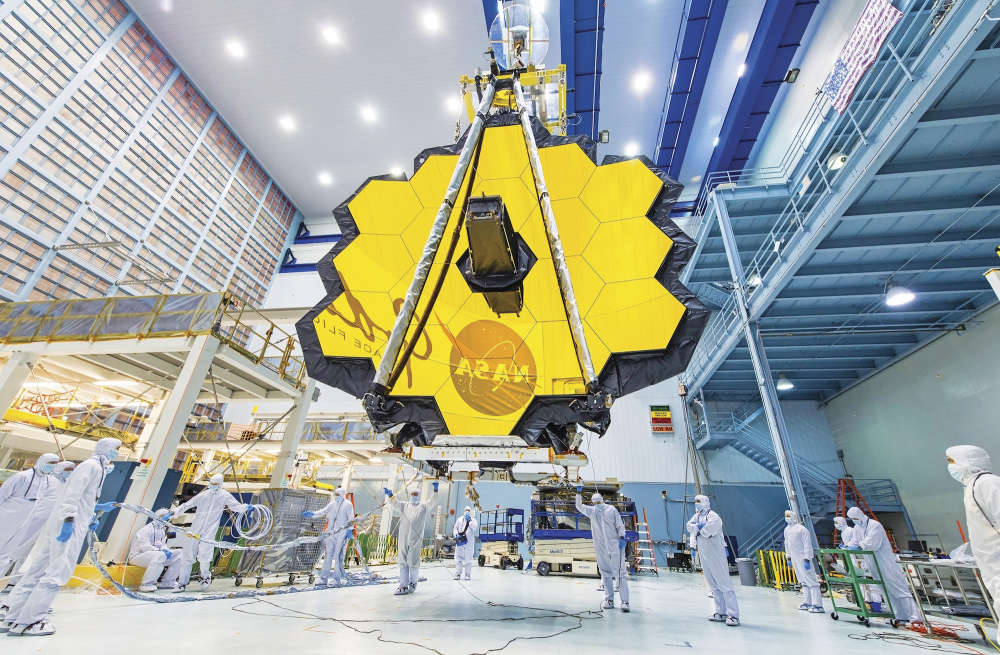
James Webb Telescope
There are three working historic telescopes at Herstmonceux. As Sandra opened the shutters of Dome D for me, I couldn’t help but stare into space and think, is there anybody out there? Beneath it was the 13-inch Astrographic Refractor, an early photographic telescope that helped locate 179,000 stars between 1892 and 1905. Across in Dome E, I saw the large Thompson 26-inch Refracting Telescope, which has taken over 60,000 photographs during its working life.
“Start thinking about our Milky Way,” effused Sandra. “Up to 400 billion stars, 2 trillion galaxies; it is awe inspiring to contemplate what is going on. What is up there, and who is out there?” The Star Wars crawl – A long time ago in a galaxy far, far away, suddenly seemed more than a little inconsequential. Reality is more powerful than you can possibly imagine!
Sandra’s top tips for summer stargazing newbies
- It must be dark and cloud cover must be at the absolute minimum, ideally opt for cloudless skies and a minimum of light pollution
- Go out into the garden, or up to the Downs, take a blanket, lie down and watch the night sky light up
- With the naked eye, the more you look the more you see as your eyes adjust to the darkness
- Ideally there should be a new moon rather than a full moon
- Even with a full moon, constellations like the plough are visible
- With a new moon and darker skies, the stars within the constellations start to become visible
- After looking at the sky for an hour the rotation of the earth becomes obvious
Sandra’s top tips to take stargazing to the next level
- With 10x 50 binoculars, planets start to become visible, and the largest craters on the moon are relatively easy to spot
- Entry level telescopes start at about £100 – diameter of the optics is key
- An entry level telescope will also make the rings of Saturn and the moons of Jupiter visible
- Make sure the tripod is sturdy enough to keep your telescope steady
- Once you’ve learnt 3-4 recognisable constellations and can locate the north star, the gaps start to take care of themselves
- Use a stargazing app to help build your knowledge
What to see this month
- In early August the Sun sets about 10 minutes before 9pm but by the end of the month it is setting almost an hour earlier. The full Moon is on the 12th August and the new Moon is on 27th August
- The annual Perseids meteor shower can be seen until 23rd August. The peak occurs when the intensity of meteors passing through our atmosphere is at its highest, on 12-13th August with 60-100 meteors per hour. They are pretty fast moving and can leave persistent trains
- Constellations to look out for this month include the ‘summer triangle’ which consists of Cygnus, Lyra and Aquila which will be due south at midnight by the middle of the month
- At the beginning of the month Saturn rises at about 9.20pm and Jupiter rises at about 10.40pm. Look for them in the east as they rise above the horizon. By the end of the month they rise at about 7.15pm and 8.40pm respectively. Jupiter is much the brighter of the planets, following Saturn across the sky
- By the middle of the month Mars will rise before midnight, getting brighter each night, and brighter than Saturn. Look out for the orangey-red object following Saturn and Jupiter
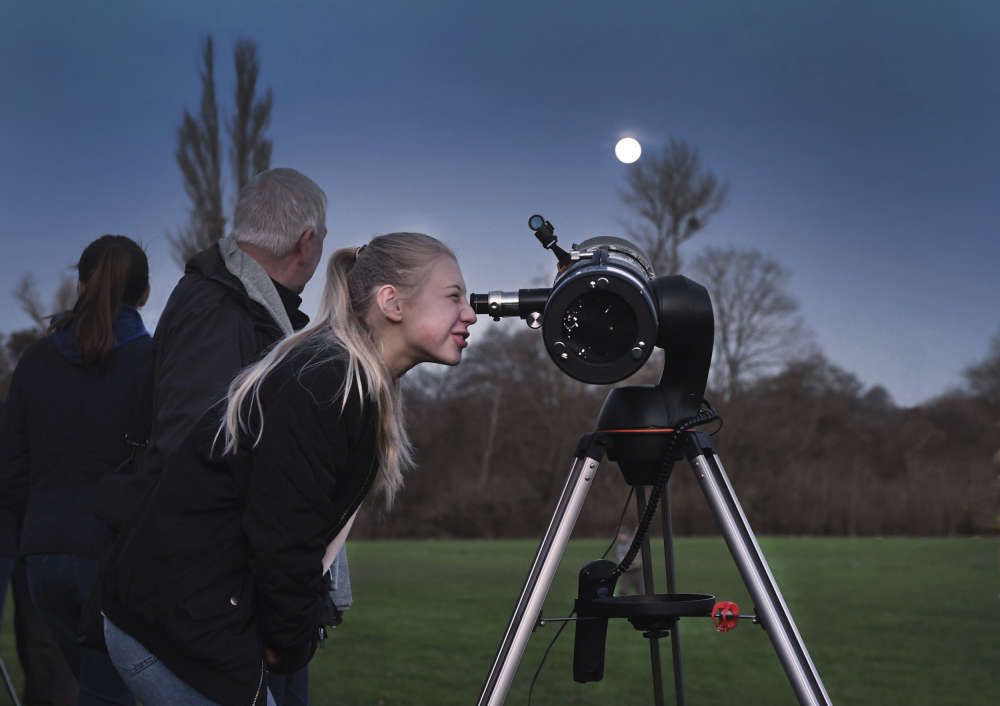
PHOTO: ANNE PURKISS/SOUTH DOWNS NATIONAL PARK

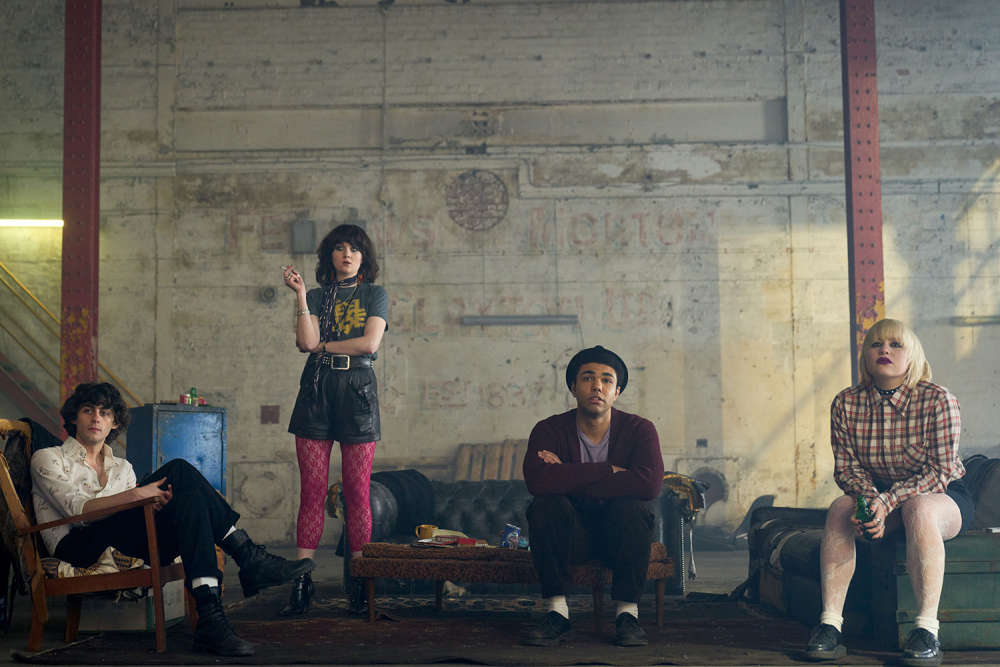 What to Watch in April 2024
What to Watch in April 2024
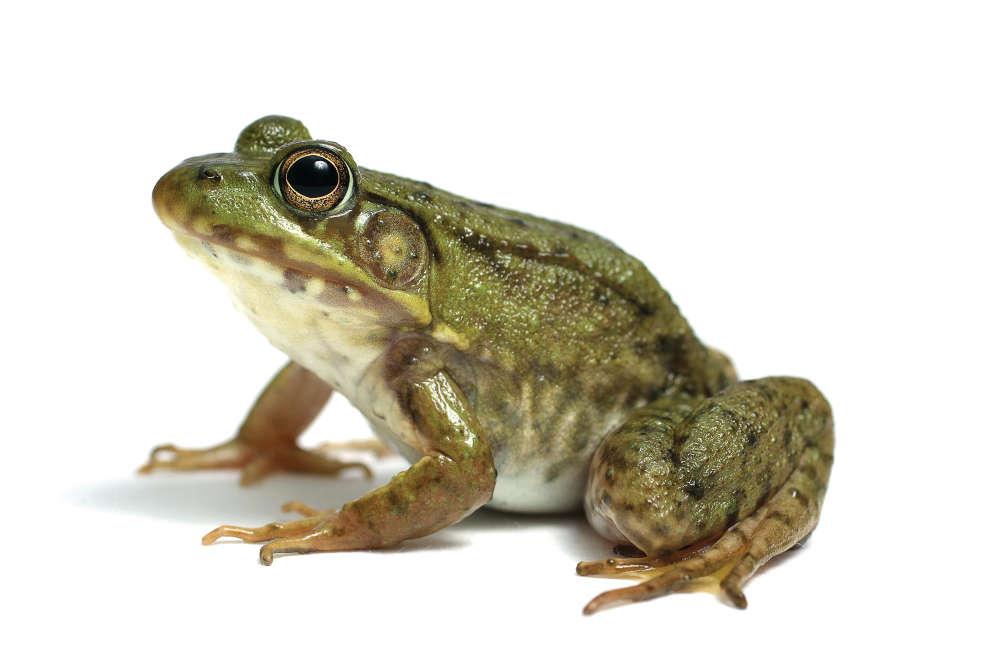 If You Ask Me: The Jobsworth and the Frog
If You Ask Me: The Jobsworth and the Frog
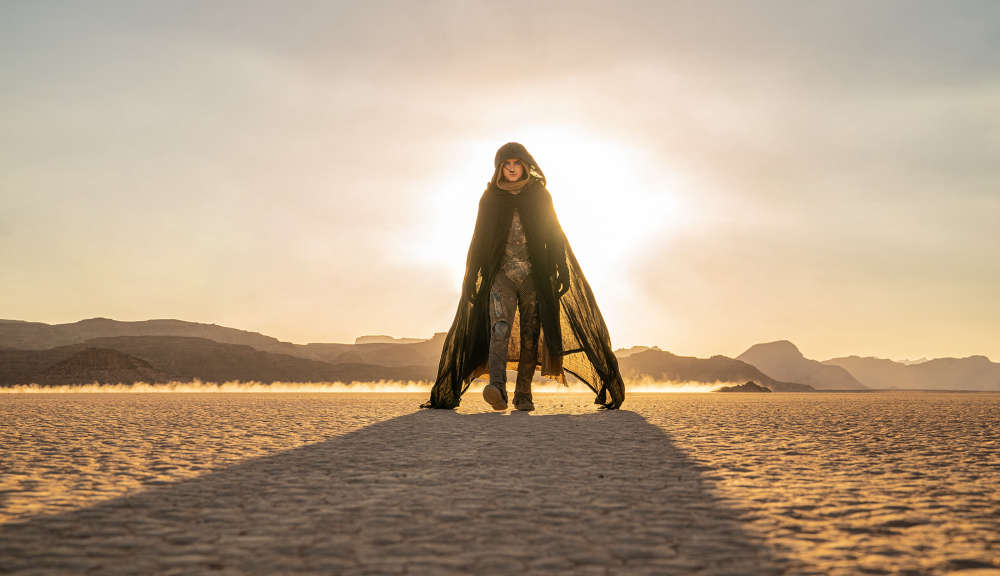 What to Watch in March 2024
What to Watch in March 2024
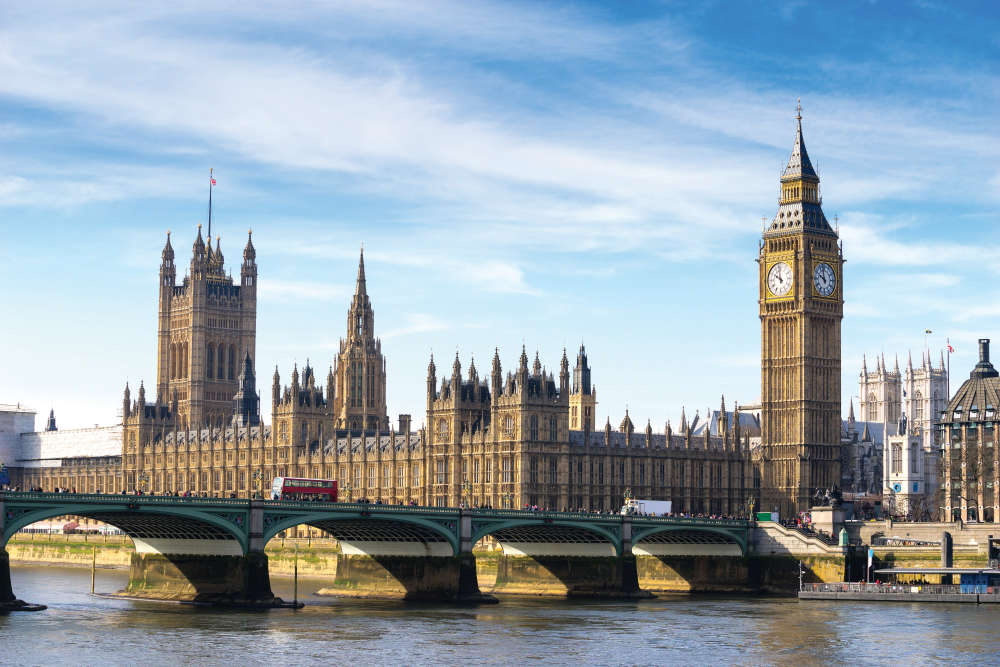 If You Ask Me... Politicians need a Translator
If You Ask Me... Politicians need a Translator
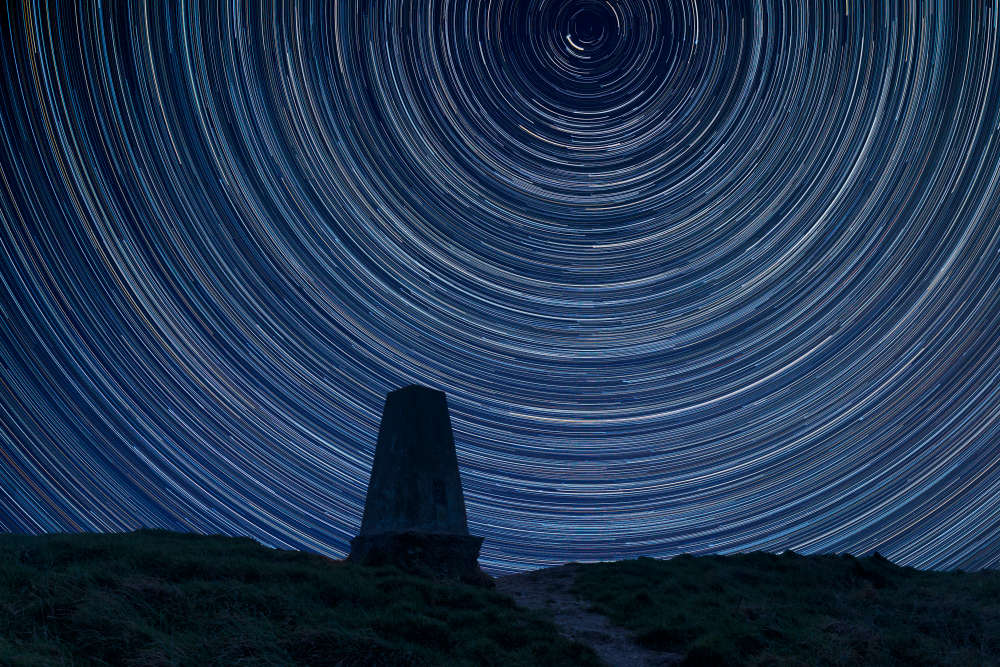 Dark Skies Festival 2024: Where & When to Gaze at the Stars
Dark Skies Festival 2024: Where & When to Gaze at the Stars
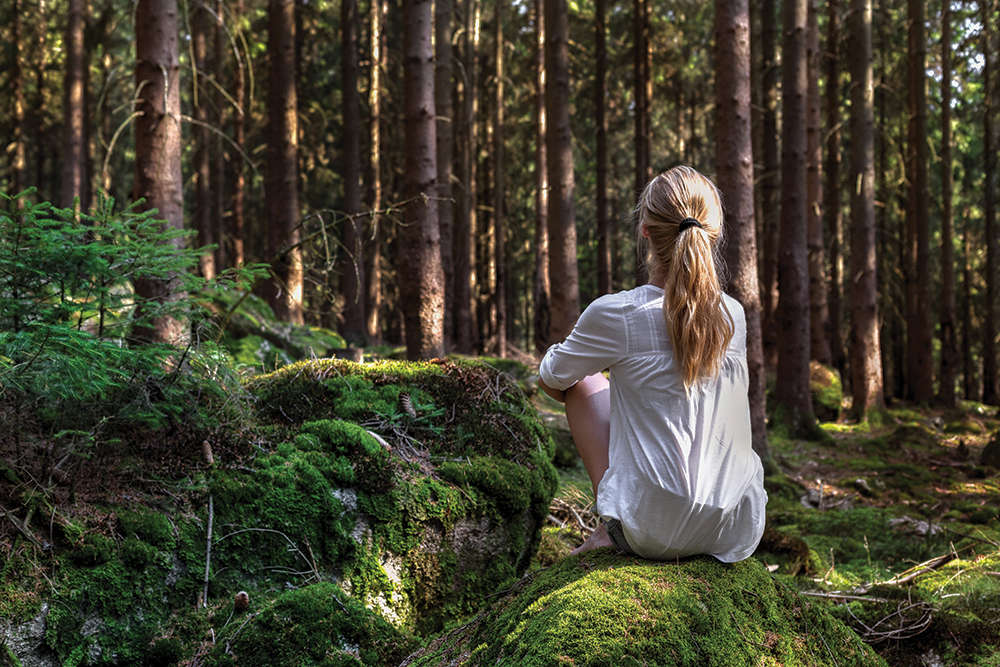 Be Well, Move Happy: Walking & Silence
Be Well, Move Happy: Walking & Silence
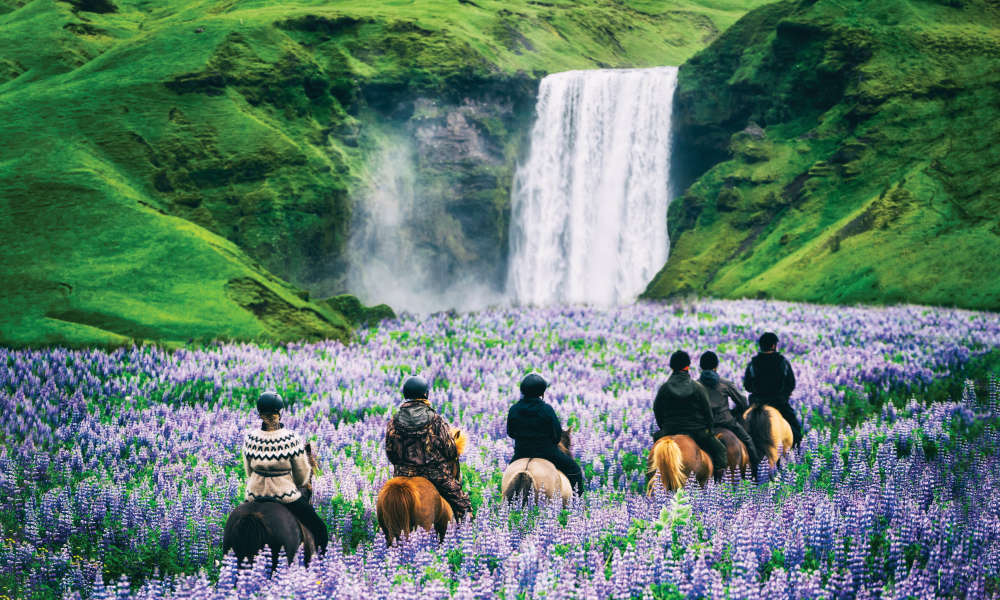 Special Interest Holidays: Try Something Different
Special Interest Holidays: Try Something Different
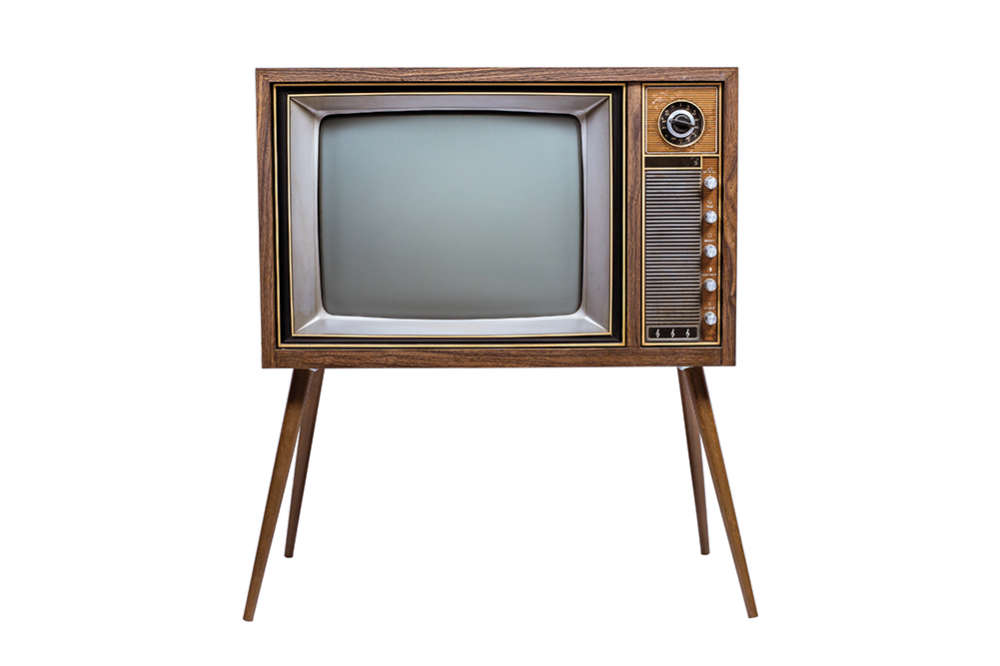 If You Ask Me... Who needs Television anyway?
If You Ask Me... Who needs Television anyway?
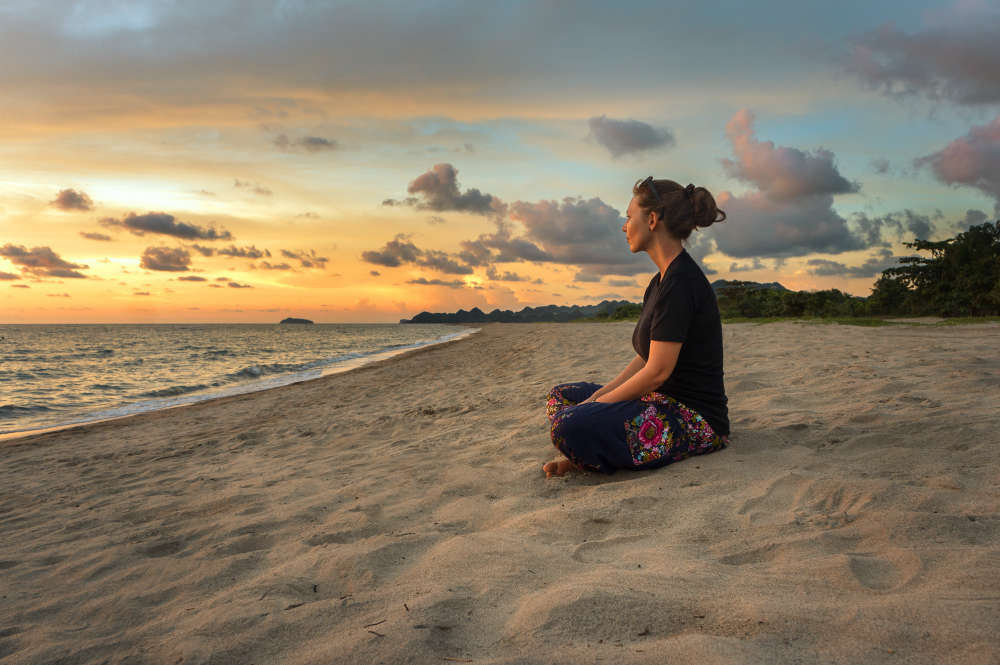 5 Ways to Cultivate Mindfulness
5 Ways to Cultivate Mindfulness
 Love Local Community Campaign
Love Local Community Campaign
 Summer Activity Ideas To Entertain You and the Kids
Summer Activity Ideas To Entertain You and the Kids
 Summer School - Part 2
Summer School - Part 2
 The Ultimate Act of Love: Providing for Your Family's Future with a Will
The Ultimate Act of Love: Providing for Your Family's Future with a Will
 Five of the best anti aging facial exercises
Five of the best anti aging facial exercises
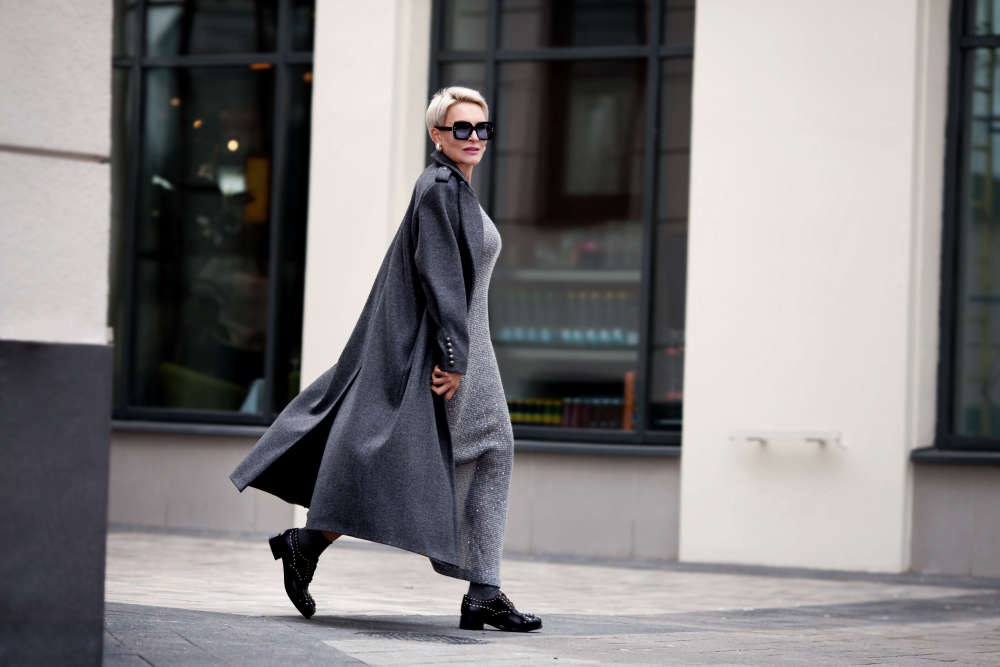 Five Essential Fashion Classics For the Mature Woman
Five Essential Fashion Classics For the Mature Woman
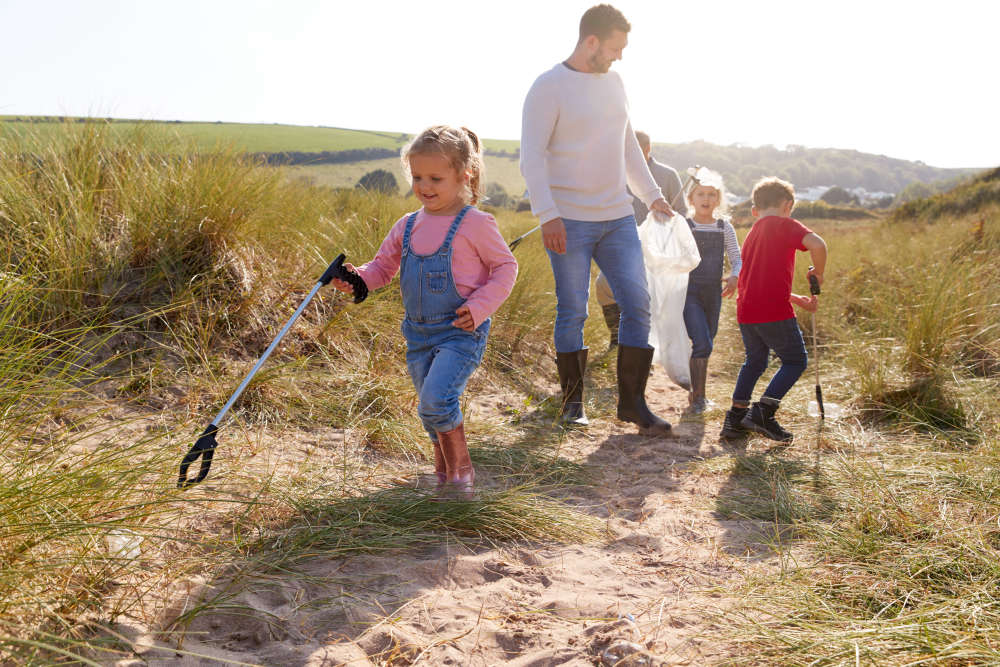 Get your children involved in litter picking this Summer holidays
Get your children involved in litter picking this Summer holidays
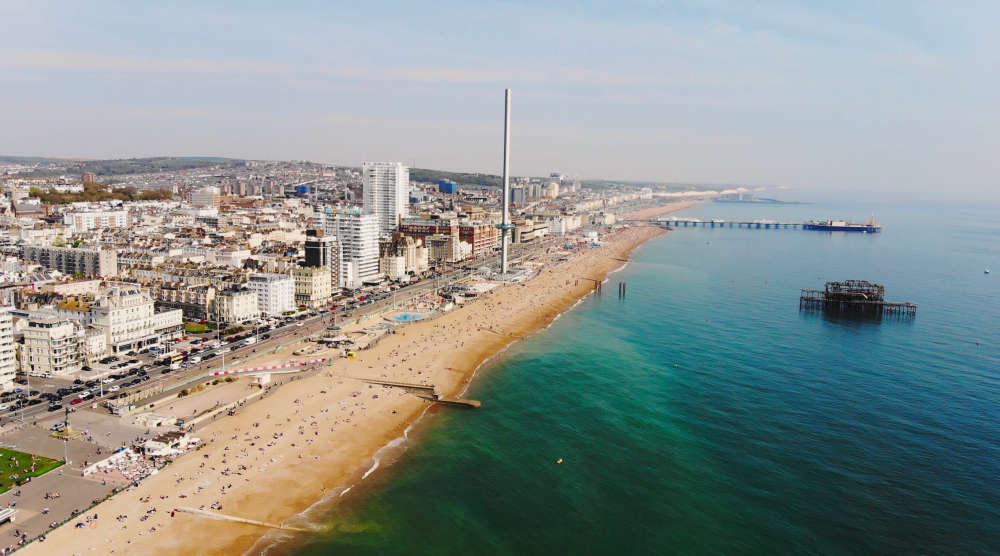 So you think you know Brighton’s history?
So you think you know Brighton’s history?
 Five Early Summer Reads to Enjoy in the Sunshine
Five Early Summer Reads to Enjoy in the Sunshine
 A basic guide to insurance by Lisa De Silva
A basic guide to insurance by Lisa De Silva
 6 ways to improve your golf game in Sussex
6 ways to improve your golf game in Sussex